Based on the experienced of introducing Forest Gardens to small-scale farmers in Mwanga in Northern Tanzania since 2023, we designed a similar project in the Southern Coastal Lowlands (SCL) of Tanzania, one of the poorest rural areas in the country. Small-scale agriculture in the SCL faces many challenges that leave families food insecure, poorly nourished, and their health and surroundings compromised by chemicals. Farmers depend on cashew nuts – with uncertain and exploitative markets – and a small number of annual crops cultivated by slash-and-burn methods utilising high doses of herbicides and yielding low harvests. With annual food crops only, their land is unproductive, uncovered and unutilised for many months of the year resulting in soil degradation and poor water cycles. Biodiversity in agricultural areas is low and land use contributes to climate change. It offers no resilience against weather variation. Agriculture does not attract the youth, yet unemployment is high and other job options are scarce.


The project
The project supports small-scale farmers in transforming their open fields into diverse agroforestry systems known as Forest Gardens. Each Forest Garden is surrounded by a live fence composed of three tree species, which protect the land while improving soil health and fertility through nitrogen fixation and the provision of biomass for mulching and composting. The Garden is divided into sections by marejea, lines of multipurpose trees or crop lines such as pigeon peas. Within the garden, a variety of food crops and fruit trees ensure year-round access to nutritious food. In addition, timber and multi-purpose trees are planted for household use, partial shading, and to enhance the microclimate for better soil and water management. Forest Gardens also create a pleasant and inspiring work environment, enabling farmers to earn a decent livelihood from sustainable agriculture.
- The project runs from January 2025 to December 2028.
- 500 small-scale farmers with family members, total of 3300 beneficiaries, establish FGs, each with about 2500 trees. Farmers are taken in two parts, about half of them start in 2025 and another half 2026.
- Women form over 50% of the groups, PLHIV 10%.
- Micro-loans allow investments and joint marketing and marketing skills allow for effective selling.
- Youth groups and children with disabilities grow seedlings and organic vegetables. 40 pupils from Lukuledi special school participate in establishing a demonstration 1-acre farm on school grounds; the whole school benefit from vegetable growing and educational activities.
- Farmers and Extension officers are empowered to learn and spread FG practices.
- The main local Tanzanian partner organisation is KIMAS (Kitovu cha Maendeleo Safi); with Upendo Charity participating in the gardening activities at Lukuledi special school.
- 85% of the funding comes from the Ministry for Foreign Affairs of Finland; 15% remains for Liana to raise from different sources and contribute as voluntary work and/or donations in kind.
Forest Garden model used
Forest Gardens are multi-layered, integrated agroforestry system that combine trees, shrubs, crops and animals in one area to sustainably produce a variety of products and environmental services. There are many types of Forest Gardens depending on location and tradition. The project picked the same model as our Mwanga Forest Garden project as a staring point. This model originates from Trees for the Future work in Tanzania. Trees for the Future has helped over 10,000 farmers in Tanzania – mainly Tabora, Singida, Simiyu – to establish Forest Gardens, starting a transformation of agricultural livelihoods and landscapes. This project pilots a similar approach yet in another socio-ecologically different environment; and thus learning from practice is an important component of the project.
What does it take to establish a Forest Garden?
1. Large scale tree nurseries:
- Large-scale tree seedlings nurseries are established 2-3 months before the rains start. Masasi has only one long rainy season that starts in December or January, thus outplanting is timed to happen in January. These nurseries host tree seedlings for a live fence (hedge, wigo) which consists of three tree species; timber trees and fruit trees.
2. Live fence:
- The live fence is planted around the farm at the beginning of the rainy season. It has three species. Acacia polycantha for protection, and both Leucaena and Gliricidia are used for fodder (Leucaena alone, Gliricidia as mixed with other fodder types). Gliricidia branches and leaves are cut for mulch and composting. Larger branches from live fence can be used for firewood. All three species fix nitrogen from the air. For an acre the live fence has a total of about 2500 trees. The live fence is pruned and weaved to keep it dense and less than 2 meters high. The structure of the live fence is as follows:
- On the outer line Acacia polycantha seedlings are planted at 30cm interval
- On the middle line, Gliricidia sepium and Leucaena leucocephala are planted alternately at 30cm interval
- On the inner line Gliricidia is planted at 50 cm interval. Lines are 50cm apart.
3. Alley cropping: marejea divide the farm area into sections
- The farm area inside the live fence is divided for different agroforestry activities by east-to-west alley lines (marejea), or contour lines. Species for marejea are Pigeon peas and/or Gliricidia and fodder grass combinations.
4. Diversified trees and crops inside the sections divided by marejea
- A variety of fruit and timber trees
- Maize intercropped with pigeon peas or other legumes
- Kitchen gardens for vegetables (by irrigation)
- Sweet potatoes, cassava etc.
- Space is typically allocated vertically for multiple uses (= multi-layered, with taller plants over shorter plants).
5. Organic soil and pest management
- It is essential to practice Composting, mulching and crop rotation, together with organic pesticides and boosters to ensure healthy soils and plants.
Adaptations to the approach in Masasi
Sequence of activities in the project is different due to rainfall pattern in Southern Africa
Forest Garden establishment normally starts from protection, namely establishing the live fence. In Masasi the first activity – after the project is introduced in the communities and farmer groups are formed – is vegetable growing. This is simply determined by the fact that the project starts in January, yet outplanting of tree seedlings cannot happen till the rains start in December. This is not a big deal, as a temporary dead fence can be establish to protect the vegetable cultivations.
Vegetable growing is in fact one of the most popular activities amongst farmer groups, and thus a good start for a project, as it brings nutritious food on the plate quickly. Most of the activities are done collectively by each group in an area selected by the group as their shamba darasa, classroom field, where all the training takes place and the biggest beds are established. However, small-scale growing is also started at home, and this forms the first activities of the future Home Garden in each farmer’s homestead. In conjunction with the vegetable growing, farmers learn composting, mulching, organic pesticide making, and organic boosters, all of which are useful in vegetable growing.
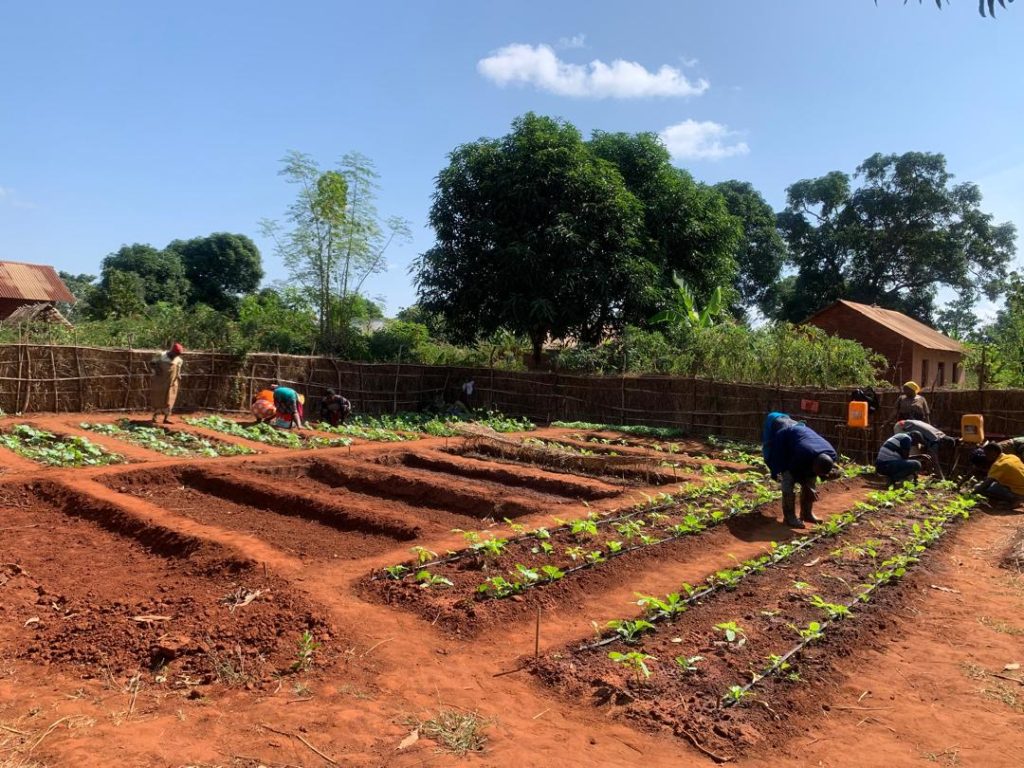
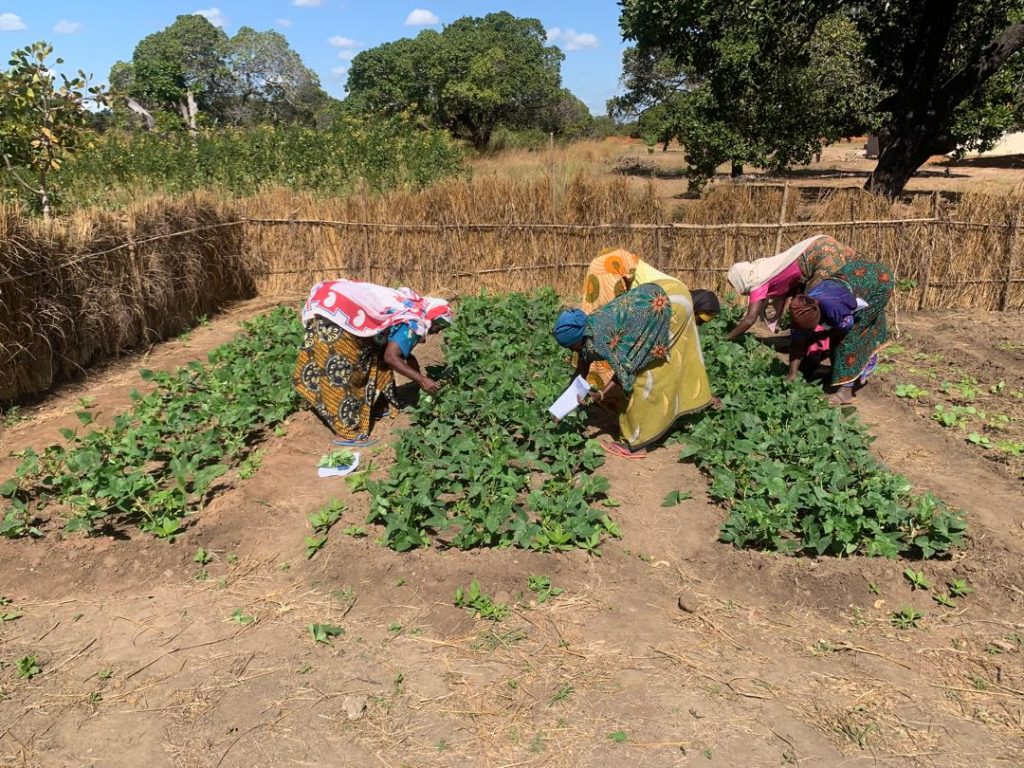
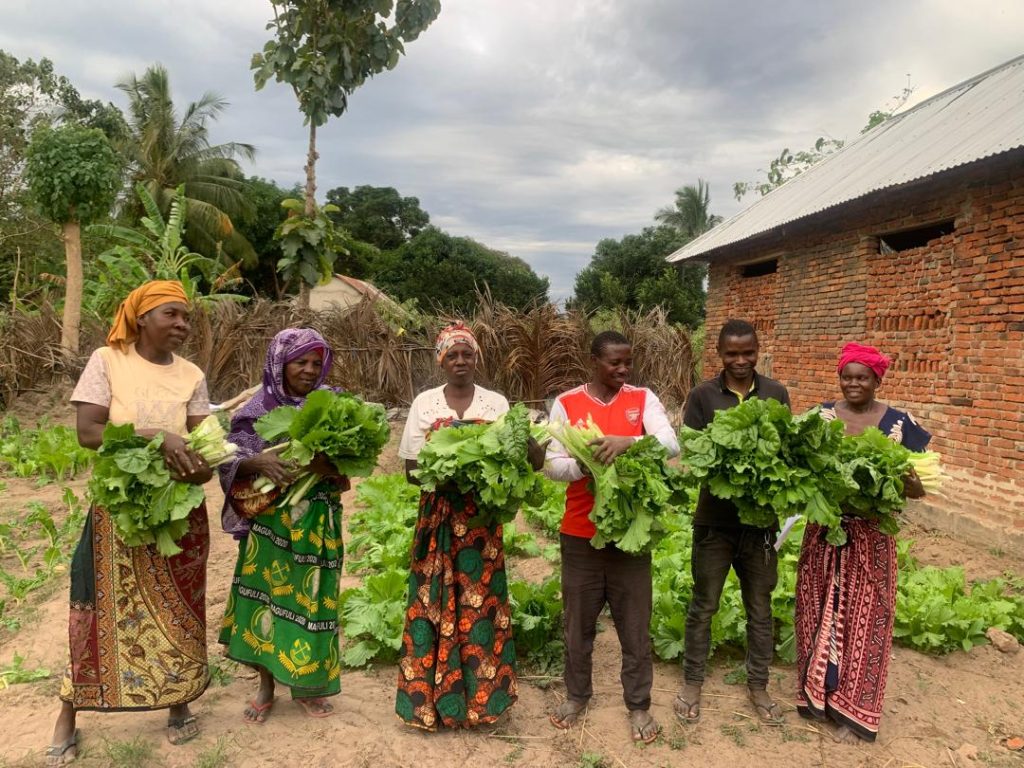
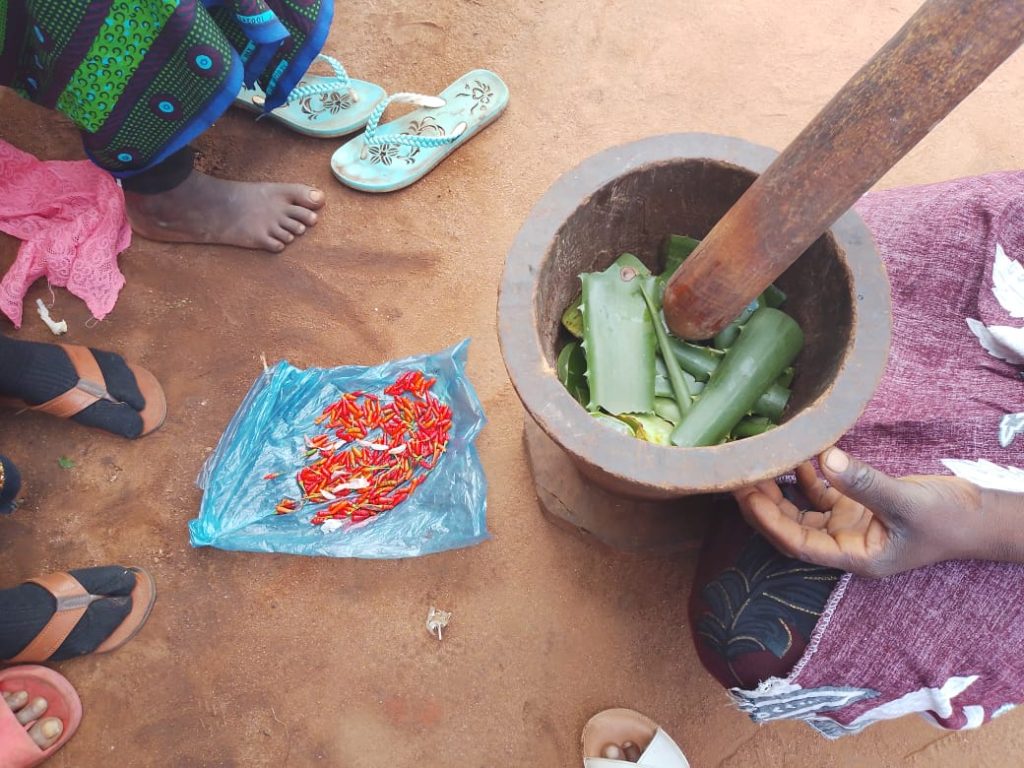
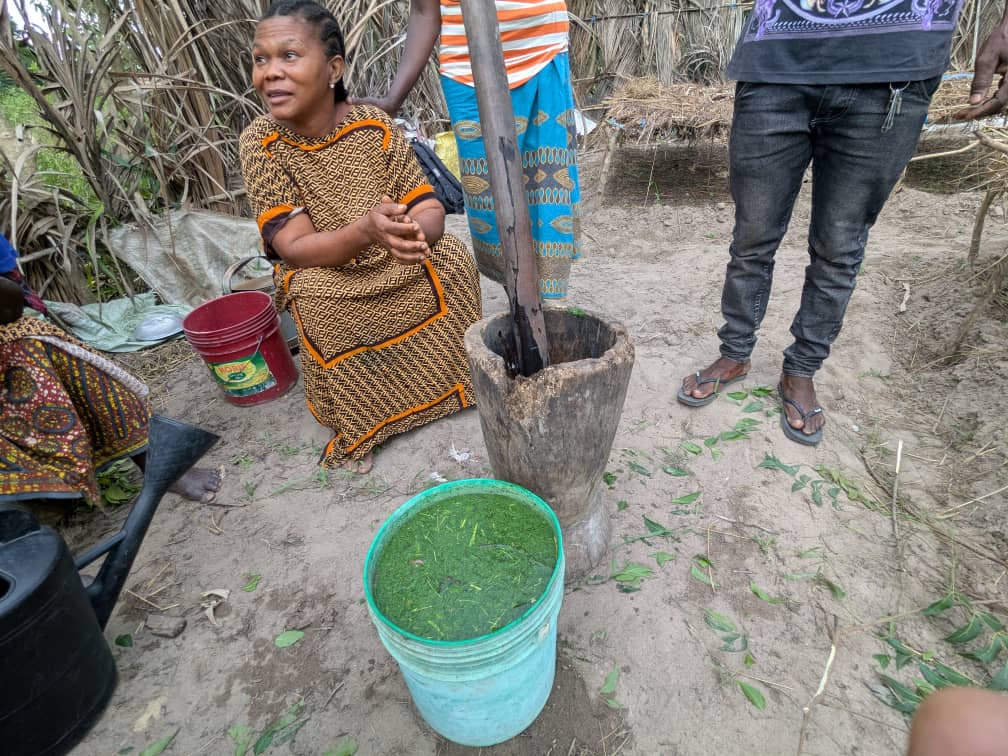
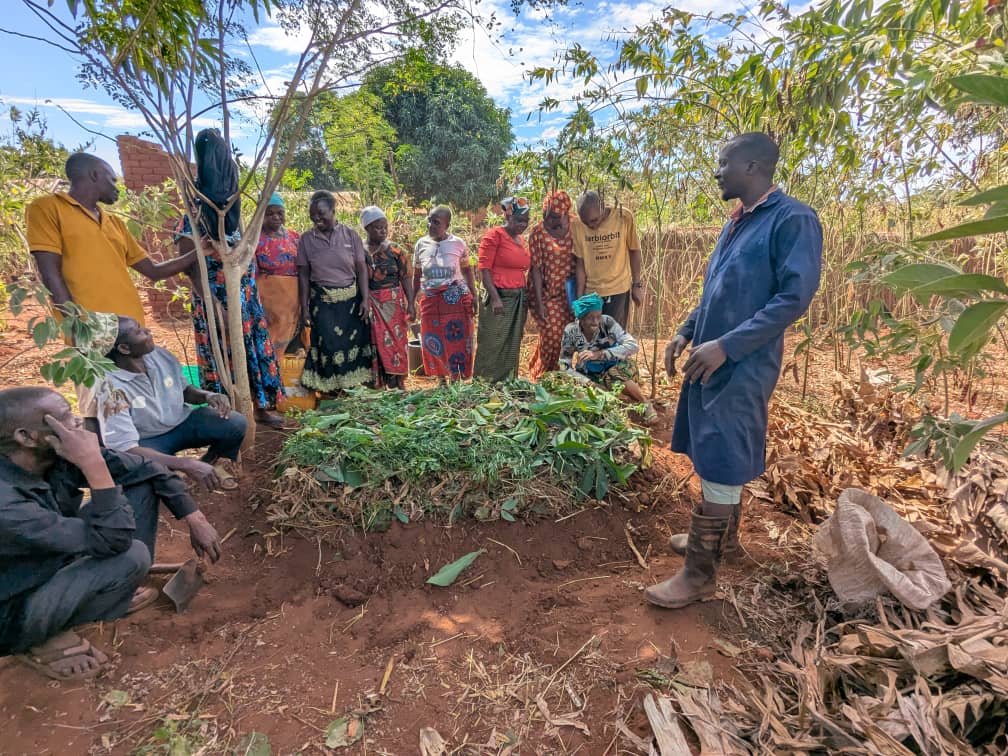
Home Garden around the house; alley cropping in the field area; several tree species from year 1
Masasi requires another adaptation to the Forest Garden approach compared to Mwanga, namely, breaking the different Forest Garden components into two locations. Most farmers have a small plot in a village where their house is located, and another field area for food crop cultivation outside the immediate village.
Thus most farmers in Masasi will have a Home Garden with vegetables and fruit trees around their house, surrounded by a live fence for protection, soil improvement (mulch, compost), fodder and firewood; and a food crop area with marejea (alley lines) made out of nitrogen fixing and long-rooted Gliricidia and/or Pigeon peas to improve soil and add to the production of the food crop area; and a live fence surrounding the field.
Tree nursery activities in Masasi are started in July for outplanting in January. Most of the seedlings are for the live fence, namely Acacia polycantha, Gliricidia sepium and Leucaena Leucocephala. However, several other trees are grown during the first nursery season: Moringa, Neem, Guava, Lemon, Orange, Papaya. This is also an improvement from our Mwanga project: we start several other tree species from the first nursery onwards. Farmers learn how to extract seeds from fruits and how to treat seeds to enhance germination.
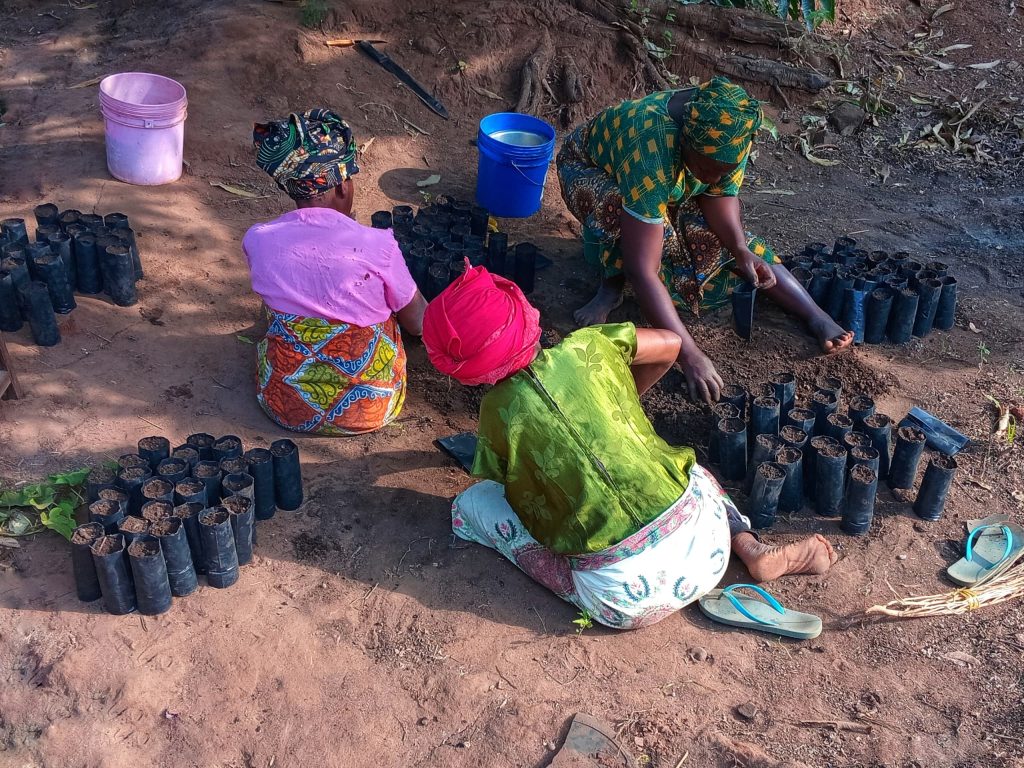
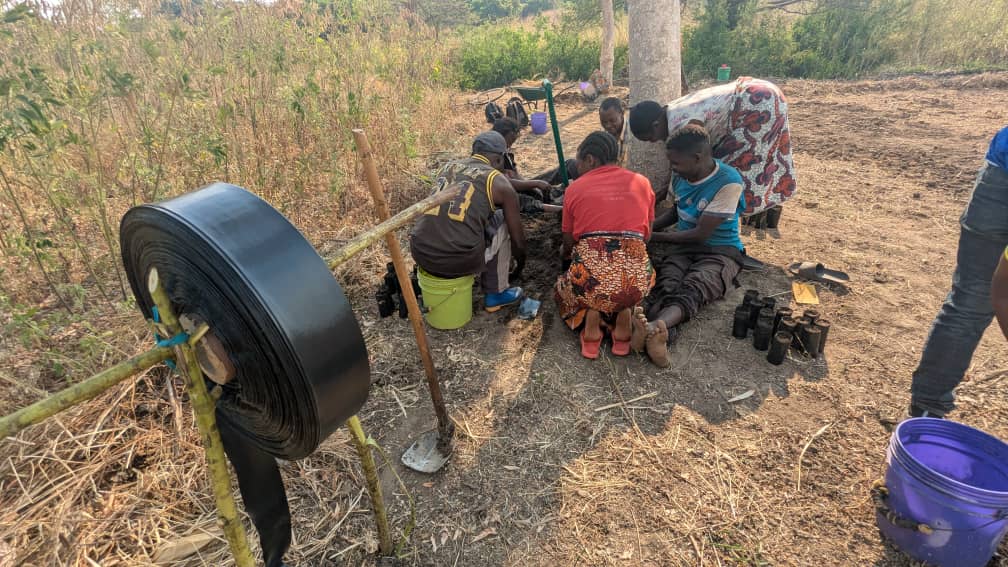
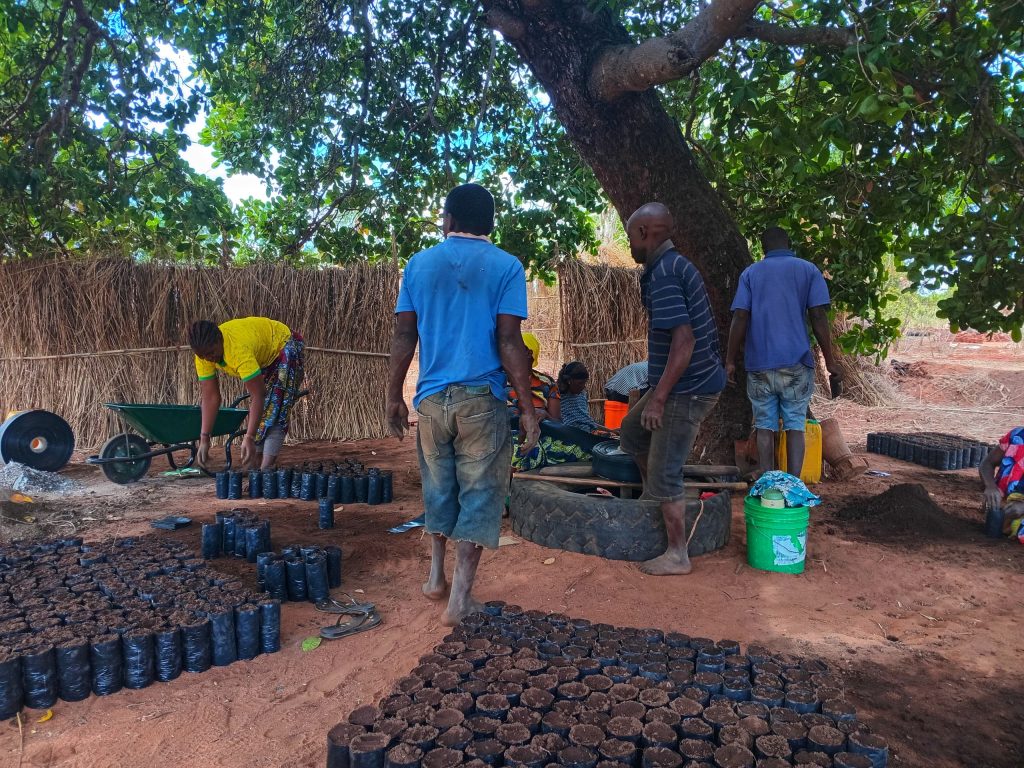
Impacts are envisaged in 4 sectors:
- Nutrition: Increased diversity of nutrient-rich foods throughout the year
- Income: Diverse farm products provide more to sell
- Nature: Increased number and diversity of trees; better soils, water cycle and microclimates; increased biodiversity, carbon sequestration and protection from weather extremes
- Empowerment: Beneficiaries are more knowledgeable and socially empowered with improved livelihoods.
